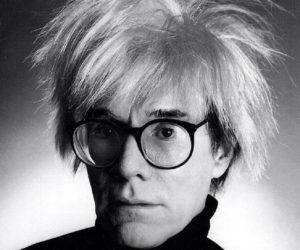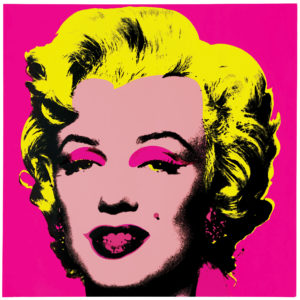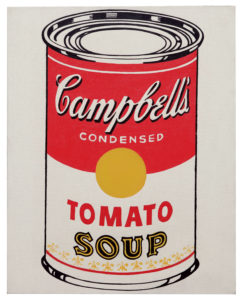
One of the best things my parents ever did for me was to subscribe to Life, Look, and Post. The big, lavishly illustrated magazines gave me an appreciation for all sorts of things that I might have otherwise missed out on living in a small town.
For instance, Miami, Oklahoma didn’t have an art gallery. But Life and their ilk allowed me to develop an appreciation for art nonetheless.
An artist whose work appealed to a child like me was Andy Warhol.
Warhol was one of the most famous “pop art” artists. Pop art got it start in the mid 50’s. The unconventional style involved techniques like assembling collages of photographs, or painstakingly creating blown up reproductions of comic book scenes, accurate down to the individual color dots. Warhol’s style, at least in the early part of his career, used silk screens, photograph-like paintings of everyday objects like Coke bottles, and bright, unnatural colors.
A kid would love it. That’s why many art critics spurned Warhol’s art and dismissed it as juvenile and amateurish.

Warhol was born to his Slovak immigrant parents in Pittsburgh, Pennsylvania in 1928. A construction worker, his father died in an accident when he was thirteen years old.
The young Andy had an artistic knack, After graduating high school, he studied art at the Carnegie Institute of Technology in his hometown. Graduating in 1949, he got a job as a commercial artist in the advertising business. His work also appeared in Vogue, Harper’s Bazaar, and other New York publications.
Warhol began exhibiting his works beginning in 1952. He was basically removing the line between commercial and traditional art. He once stated “When you think about it, department stores are kind of like museums.”
While many critics sneered, the public loved it. Eventually, he dropped out of the commercial business and opened his own studio appropriately called The Factory in 1962.
The factory cranked out lots of art. Warhol would produce prints and silkscreens that could be replicated by his employees. He also designed shoes which they would assemble. Additionally, the gifted but eccentric artist produced many films there. They were pretty strange. For instance, Sleep, his first, was a six-hour film of a man sleeping.
In 1964, an art show called The American Supermarket was put on by Warhol and five other pop artists. In it, he debuted his famous Campbell’s Soup concept. The illustrated painting was available for $1500. He also sold autographed cans of soup for $6.00 each. Either purchase would have been a seriously good investment.

Warhol’s art appeared everywhere throughout the 60’s (including Life magazine and her sisters). But then, in 1968, everything changed with a gunshot.
I’m not talking about Bobby or Martin Luther King. Warhol himself was shot at The Factory by a nutty woman who had founded a group called SCUM (Society Cutting Up Men). Warhol was seriously injured, but survived.
However, his commercial-themed art days were done. When he got back to work, his specialty was portraits of the rich and famous. He eventually opened a nightclub and launched a magazine called Interview.
Warhol died in 1989. His legacy includes many great works of art, both “pop” and more traditional. But if you remember JFK, you likely also remember Campbell’s Soup cans, Coke bottles, or possibly purple Marilyn Monroes hanging on the walls of some of the places you visited, or perhaps illustrated in Life magazine.